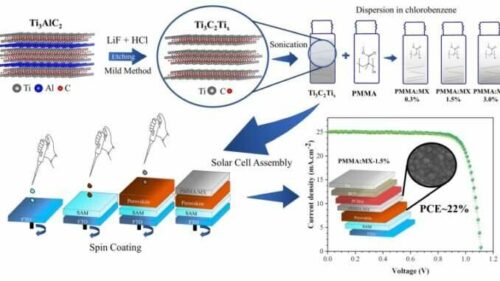The study reveals how researchers enhance solar cell performance using MXene, a development that could transform energy production.

The performance of perovskite solar cells, which have a layered structure, is significantly influenced by the arrangement of these layers or the cell’s architecture. In an inverted solar cell configuration, the device’s architecture is flipped to enhance optical transparency, allowing sunlight to reach the perovskite layer more effectively. Incorporating Ti3C2Tx into these cells has proven beneficial, boosting their power conversion efficiency from 19% to 22%. Additionally, this enhancement has led to a notable increase in the cells’ stability, with them lasting three times longer without any degradation in performance compared to control cells that do not have the passivation layer.
Researchers at São Paulo State University (UNESP) in Bauru, Brazil, have developed a method to enhance the efficiency and stability of perovskite solar cells, a laboratory-produced semiconductor material, using a class of materials known as MXenes. These two-dimensional materials, similar to graphene, consist of transition metals, carbon and nitrogen, and surface functional groups like fluoride, oxygen, or hydroxyl. They are characterised by their high electrical conductivity, good thermal stability, and high transmittance. This innovation holds the potential to impact the future of the solar energy industry significantly.
The researchers found the results surprising as the project’s initial goal was to mitigate the performance decline caused by adding an insulating passivation layer. Research on perovskite solar cells is centred on developing large-scale industrial production systems to create stable, high-performance cells.
The study demonstrates that incorporating MXene is viable for mass production and outlines a method. It also details various electrical, morphological, and structural characterization techniques that were used to enhance our scientific knowledge of the behaviour and functionality of this complex category of devices.
The study represents a significant stride towards achieving sustainability goals, such as generating clean energy, reducing environmental impact, and positioning Brazil as a top industrial manufacturer of solar cells.
Reference: João Pedro F. Assunção et al, Interface passivation with Ti3C2Tx-MXene doped PMMA film for highly efficient and stable inverted perovskite solar cells, Journal of Materials Chemistry C (2023). DOI: 10.1039/D3TC03810F






